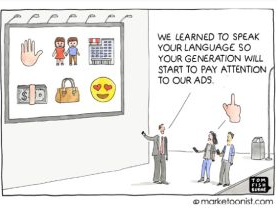Building Bridges, Breaking Stereotypes: Navigating Generational Differences in Communication at Work (Part One)
by Lisa Waite
Professor Communications Studies
Kent State University at Stark
and Women’s Impact, Inc. Founder
Ah, the joys of workplace communication! Trying to communicate effectively with a multi-generational team is like trying to navigate a corn maze blindfolded. Before we dive into the circumstances that cause miscommunication among the generations, let’s hit the pause button on our devices and explore workplace communication, ways to find common ground, and learn how to effectively coexist.
I once heard a famous talk show host suggest that we should walk toward what makes us feel alive. For many of us, this is more complex than it appears. In navigating the minefields of professional development, I’ve learned a lot about how to live life and how to maneuver it (and plenty after age 50). Here are some lessons we’ll call Waite’s Words of Wisdom that apply to personal and professional success. One of the most important of these is effective communication, which can make or break relationships, collaborations, and careers.
This success begins with knowing yourself. For instance, it’s important to be able to name at least three qualities you like about yourself and five things you’re really good at. This not only boosts your own confidence, but also demonstrates credibility and capability about yourself to others. And when it comes to communicating with people from different generations, self-awareness becomes even more important. Understanding your own communication style can help you work more effectively with people from different generations.
As I’ve gained more experience in navigating the professional world, I’ve come to appreciate the value of face-to-face communication, while also recognizing the benefits that technology can bring. An academic conference highlighted this for me when a younger colleague who stood 40 feet away sent me a text message, “Do you want to meet in 20 minutes?” I looked at her and said, “Yes.” Despite being in such close proximity, I realized that this was her preferred communication channel in a busy setting. I learned that sometimes I need to put my judgment in ‘time out’ like a hyper toddler and appreciate that others have their own ways of doing things. Otherwise, I might have missed out on a productive meeting and fun day with my colleague. As a side note, my colleague’s productivity skills are like a ninja warrior; she can strike message keys with lightning speed and precision. Watching her in action made me realize the importance of understanding effective styles for different settings and communication channels.
Let’s consider what different generations contribute. It’s easy to label the Boomers, Millennials, Gen X, Y, Z, and the new Generation Alpha. When you strip away at the stereotype, the identity is not related to the calendar year, but somewhat involves events and conditions that we experienced in our formative years. Baby Boomers had different teenage experiences than today’s young professionals. For instance, Boomers watched men land on the moon and Gen X watched the Space Shuttle Challenger tragedy, so we think differently. Here is another illustration, Boomers fought back. Dr. King fought back. Women fought back. Other oppressed people fought back. These experiences shaped communication habits and preferences. Yet, it’s kind of fascinating that the generations share optimism. Boomers are not resisters of change; they were catalysts of change. We want our kids to show us how to use technology and then in return, mom or dad will show their young adult how to write a résumé. It’s a win-win.
Many members of Gen X, Y and Z are optimistic about the future of technology and its potential to solve some of the world’s biggest problems such as renewable energy, artificial intelligence, climate change, poverty, and disease. They are forward thinkers who readily embrace diversity and believe that different perspectives can lead to more innovative and effective solutions. Generations also encountered violence differently. Boomers experienced war and protest. Younger generations experience a kid at the desk next to them with a gun. Again, these shape our communication behaviors and preferences. You get the point.


